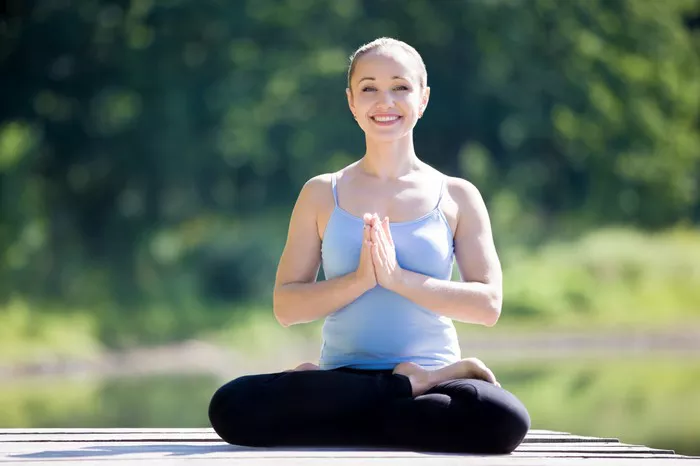In today’s fast-paced world, finding moments of tranquility amid the chaos can be challenging. The demands of work, family, and daily responsibilities often leave little time for self-care and introspection. Yet, amidst the hustle and bustle, there exists a timeless practice that offers solace and serenity: yoga meditation.
The Evolution of Yoga Meditation
Yoga meditation, rooted in ancient Indian philosophy, has evolved over thousands of years. It encompasses a range of techniques aimed at cultivating mindfulness, awareness, and inner peace. While the physical postures (asanas) of yoga garner much attention, meditation is at the heart of this spiritual discipline.
Historically, yoga meditation was primarily practiced by sages and ascetics seeking enlightenment. Over time, it spread across continents, adapting to different cultures and lifestyles. Today, millions around the globe embrace yoga meditation as a path to holistic well-being.
Understanding 30-Minute Yoga Meditation
In our busy lives, finding time for extended meditation sessions can seem daunting. However, dedicating just 30 minutes to yoga meditation can yield profound benefits. This abbreviated practice offers a practical and accessible way to integrate mindfulness into daily routines.
The beauty of 30-minute yoga meditation lies in its simplicity and efficiency. It strikes a balance between effectiveness and feasibility, making it suitable for both beginners and seasoned practitioners. Whether practiced in the morning to set a positive tone for the day or in the evening to unwind and decompress, this brief yet impactful session can enhance mental clarity, emotional stability, and overall well-being.
Preparing for Your Practice
Before delving into your 30-minute yoga meditation, it’s essential to create a conducive environment free from distractions. Find a quiet space where you can sit comfortably, whether on a cushion, chair, or yoga mat. Dim the lights, if possible, and set aside any electronic devices that may interrupt your focus.
Loose, comfortable clothing allows for unrestricted movement and breath. Consider incorporating aromatherapy by diffusing calming essential oils such as lavender or frankincense to enhance relaxation.
The Structure of Your Session
A 30-minute yoga meditation session typically follows a structured format to optimize its effectiveness. While there are countless variations, the following outline serves as a foundational framework:
1. Centering (5 minutes): Begin by grounding yourself through conscious breathing. Close your eyes and bring awareness to the sensations of your breath as it flows in and out of your body. Allow any racing thoughts to gently dissipate as you focus on the present moment.
2. Warm-Up (5 minutes): Transition into gentle stretches to release tension and prepare your body for meditation. Incorporate fluid movements such as neck rolls, shoulder shrugs, and side stretches to awaken your muscles and promote circulation.
3. Mindfulness Meditation (15 minutes): Enter into a state of deep relaxation as you immerse yourself in mindfulness meditation. Choose a focal point for your attention, whether it be your breath, a mantra, or a visual object. Allow your mind to become still and receptive, observing thoughts and sensations without judgment or attachment.
4. Visualization (5 minutes): Harness the power of imagination to cultivate positivity and resilience. Engage in guided visualization exercises that transport you to serene landscapes or evoke feelings of gratitude and abundance. Visualize yourself achieving your goals and embodying your highest potential.
5. Closing Reflection (5 minutes): Conclude your practice with a brief period of reflection and gratitude. Take a moment to acknowledge the benefits of your meditation experience and express gratitude for the opportunity to nurture your mind, body, and spirit.
Adapting Your Practice
While the outlined structure provides a solid framework, feel free to adapt and customize your 30-minute yoga meditation to suit your preferences and needs. Experiment with different meditation techniques, such as loving-kindness meditation or body scan meditation, to explore what resonates most deeply with you.
Additionally, consider incorporating props such as bolsters, blankets, or eye pillows to enhance comfort and relaxation. Experiment with varying the duration of each segment to find a rhythm that feels natural and sustainable.
The Benefits of Consistency
Consistency is key when it comes to reaping the rewards of yoga meditation. While a single session can offer immediate relief from stress and tension, regular practice yields cumulative benefits that extend far beyond the mat. By committing to a daily or weekly routine, you cultivate a sense of discipline and self-awareness that permeates every aspect of your life.
Over time, you may notice improvements in concentration, emotional regulation, and overall resilience. As you deepen your connection to the present moment, you become more attuned to the subtle nuances of your inner landscape, fostering a profound sense of peace and equanimity.
Conclusion
In a world fraught with uncertainty and upheaval, the practice of 30-minute yoga meditation serves as a beacon of tranquility amidst the chaos. By dedicating a mere half-hour to cultivating mindfulness and self-reflection, you unlock the profound potential within yourself to navigate life’s challenges with grace and resilience.
As you embark on your journey of inner exploration, remember that the true essence of yoga meditation lies not in achieving perfection but in embracing the present moment with open-hearted acceptance. May your practice be a source of inspiration, healing, and transformation as you embark on the path toward greater self-discovery and inner peace.






















